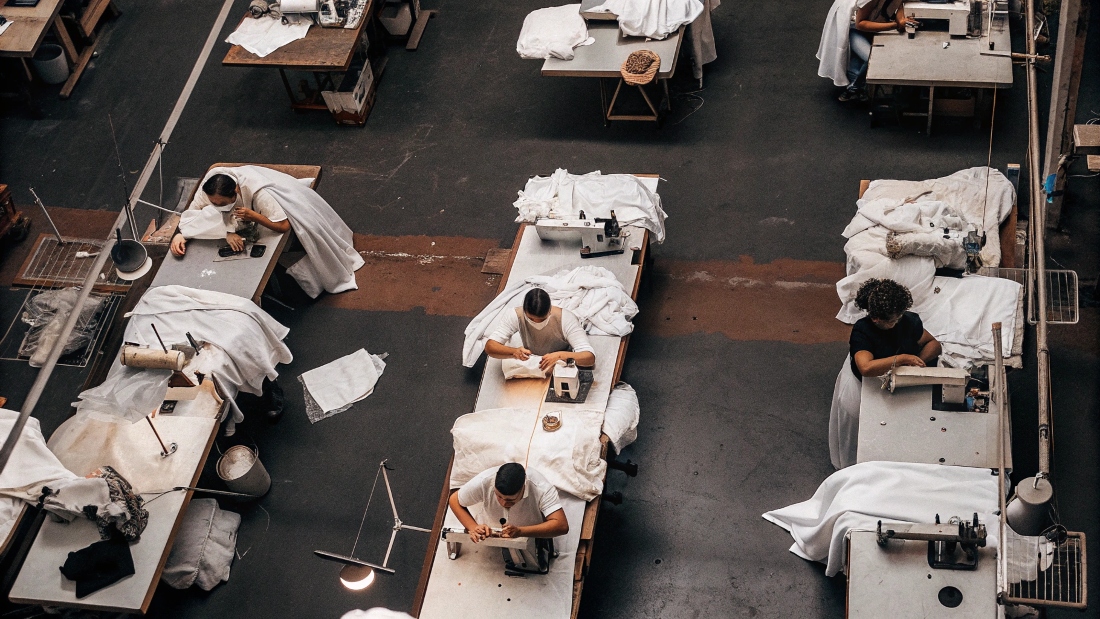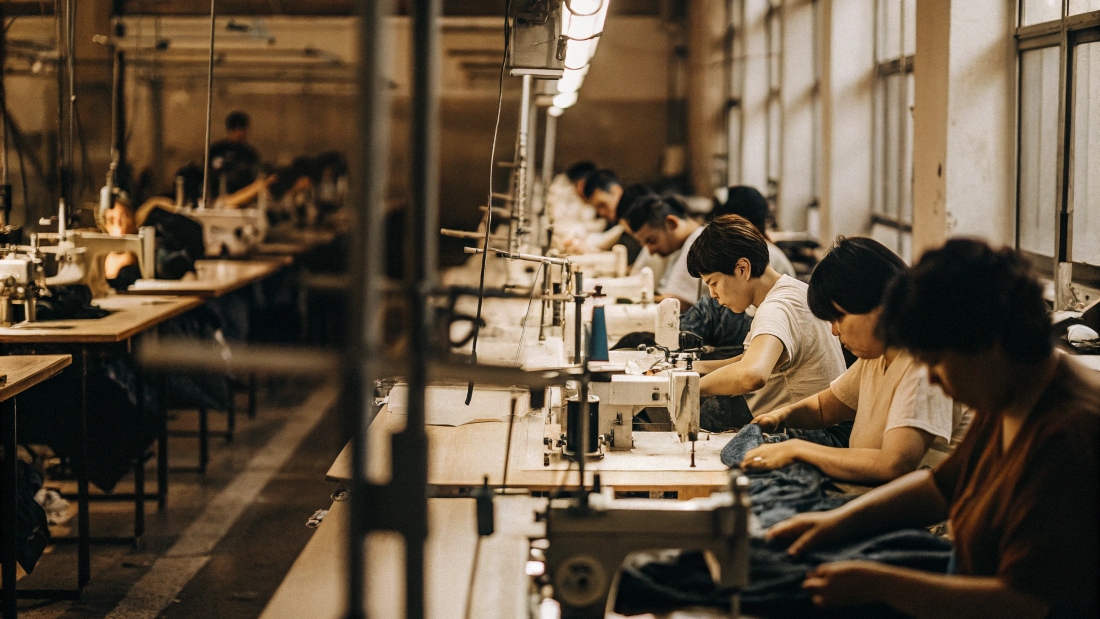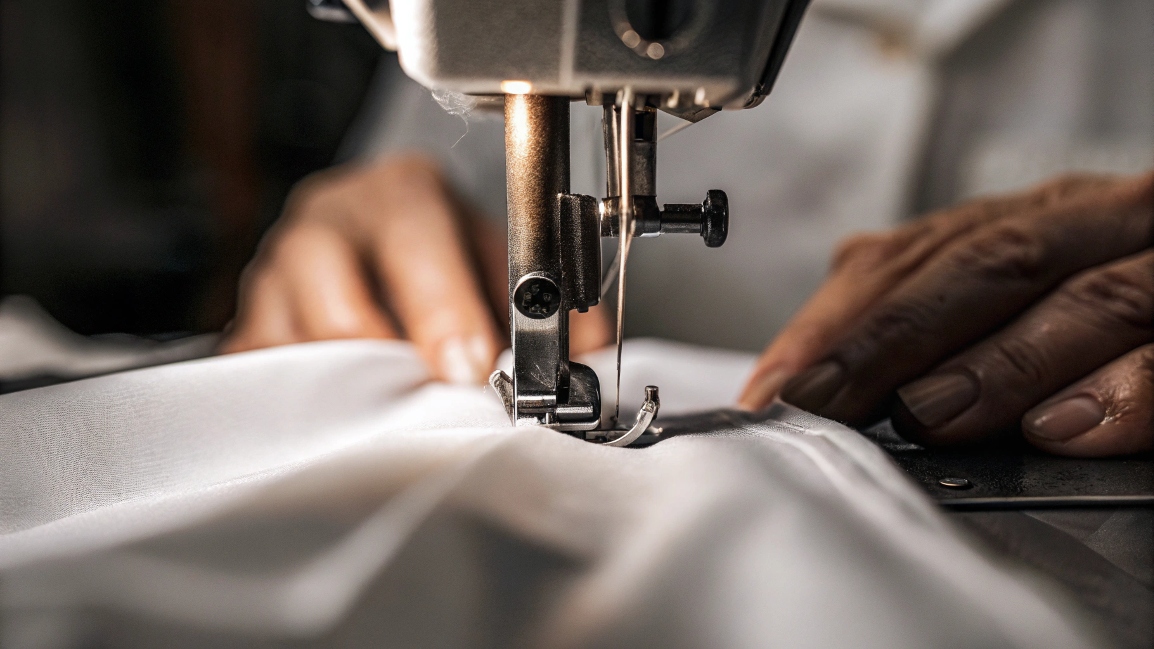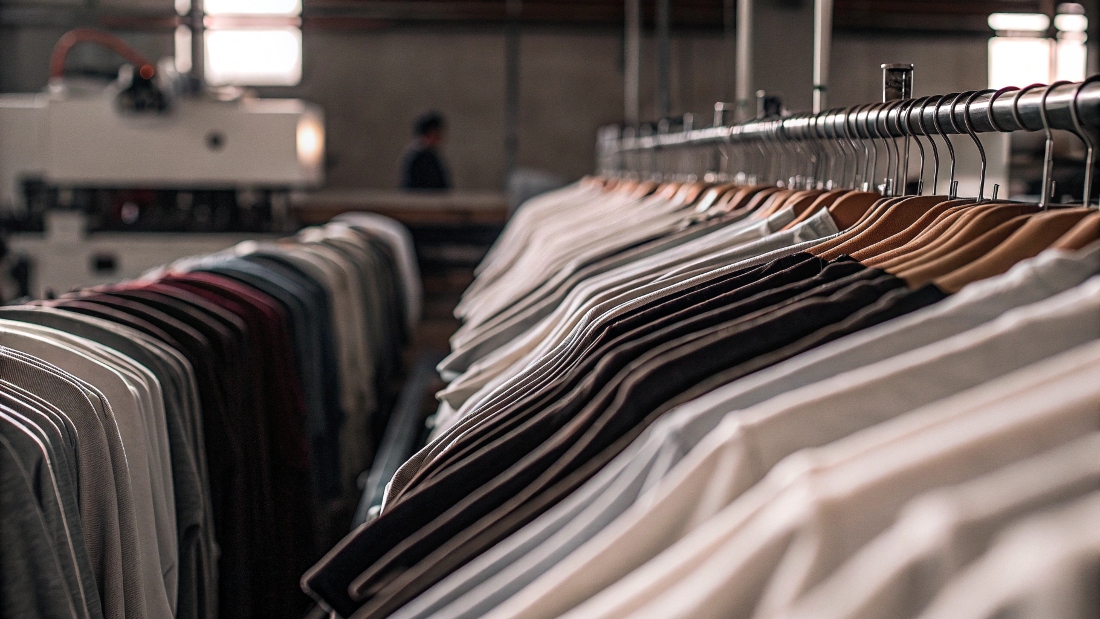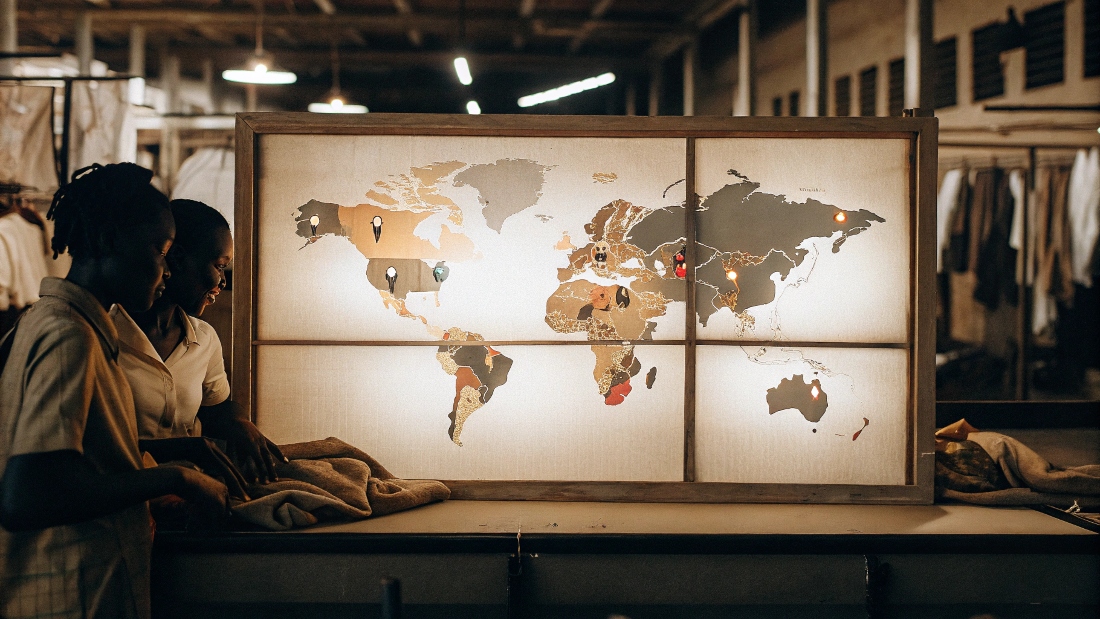You're trying to plan your clothing line's production. But factories give vague answers about output, leaving you unable to accurately forecast timelines, costs, and your path to profitability.
A factory worker's daily output varies drastically, from 1-3 complex gowns1 to 30-80 basic t-shirts2. The final number depends entirely on the garment's complexity, the factory's production method, and the worker's individual skill level.
People ask me this question all the time, and they expect a single, simple number. But after more than 20 years of running my denim factory, I can tell you there is no magic number.
On any given day, I can walk my factory floor and see one station where a worker is finishing their 20th pair of standard jeans, while another worker is still carefully assembling their second complex denim jacket.
The real question isn't "how many," but "what are we making and how are we making it?" Let's break down the real factors that I see every day that determine a factory's output.
How many garments are stitched on a product line per day?
You see images of huge factories and assume they churn out millions of items daily. But when you ask for specifics, the numbers are elusive, making it hard to grasp true production capacity.
A production line's total output is a team effort. For simple items like basic t-shirts, a line of 10-15 workers could produce 500-1,000 full garments per day. For complex jeans, that same line might produce 150-200 pairs.
In my factory, we primarily use an assembly line system3, also known as a progressive bundle system. This is the cornerstone of modern mass production. We don't have one person make an entire garment from start to finish. Instead, we break down the process into small, repeatable steps.
One worker might only sew the side seams of jeans all day. Another only attaches back pockets. Someone else just does belt loops. Each person becomes an expert at their single task, which maximizes speed and minimizes errors.
The finished garments are a result of the entire line working in sync. For a standard 5-pocket jean, a balanced line of 15 experienced workers in my factory can produce around 150 to 200 pairs in a standard 8-hour shift. This is the collective output, not what a single person makes. The "how many" depends on the complexity.
| Garment Category | Complexity | Typical Daily Line Output (10-15 Workers) |
|---|---|---|
| Basic T-Shirts | Very Low | 500–1,000 pieces |
| Standard Jeans | Medium | 150–200 pairs |
| Button-Down Shirts | Medium-High | 100–180 pieces |
| Lightweight Jackets | High | 40–80 pieces |
How long does it take to make a shirt in a factory?
You need to calculate the production time4 for your new shirt design. Without a clear understanding of the factory process, your launch dates are just guesses, putting your entire timeline at risk.
The total sewing time for a shirt varies by type. A basic t-shirt might take 15-20 minutes of total labor. A complex button-down dress shirt can require over an hour of sewing time, spread across many different workers.
In industrial engineering, we measure this using a term called Standard Allowed Minute (SAM)5. The SAM is the total time a qualified worker needs to complete a specific task at a normal pace. We calculate the SAM for every single garment we produce.
For a simple t-shirt, the SAM might be around 15 minutes. This includes sewing the shoulder and side seams, attaching the sleeves and neckband, and hemming the bottom. It's a quick process with only a few core steps.
A button-down dress shirt is a completely different story. The collar alone is a multi-step component. Then you have the cuffs, the front placket for the buttons, the buttonholes themselves, and setting the sleeves precisely.
The SAM for a well-made dress shirt can easily be 45 to 60 minutes. This doesn't mean a shirt takes an hour to come off the line; it means one hour of human labor is distributed across the assembly line to create it.
How many shirts can be stitched in one day?
You're placing an order for shirts and need a solid number for daily output. Factories often give vague ranges, which makes it impossible to plan your inventory and manage your cash flow.
An individual worker on an assembly line can help produce between 30 and 80 basic t-shirts per day. For more complex button-down dress shirts, that number drops to around 10 to 25 pieces per day.
This question has two parts: the output per worker and the output per line. The individual worker's achievement depends entirely on their assigned task and their skill level. For example, a trainee might only produce half of what an experienced veteran can.
My most skilled workers are placed on the "bottleneck" operations—the slowest and most difficult steps—to keep the entire line moving smoothly. When we introduce a new, complicated shirt design, our initial daily output6 can drop by 30-40% until the team learns the new process and gets into a rhythm.
The skill of the workforce is a huge variable. Over time, as they master the new design, the numbers climb back up. So for a designer like Dean, providing clear, manufacturable designs is key to hitting target outputs quickly.
Worker Output by Garment Type and Skill
| Worker Skill Level | Output on Basic T-Shirts (Daily) | Output on Dress Shirts (Daily) |
|---|---|---|
| Trainee | 15–25 pieces | 4–8 pieces |
| Intermediate | 30–50 pieces | 10–18 pieces |
| Experienced Veteran | 50–80 pieces | 15–25 pieces |
How many clothes are made each minute?
You hear staggering statistics about fast fashion7. The sheer volume makes you wonder about the scale of global production, and it raises questions about the pace and ethics of the industry.
Globally, it's estimated that over 150,000 garments are produced every single minute. However, this is an average that includes everything from simple socks to complex winter coats, making it a very broad number.
That number is almost too big to comprehend, but let's bring it back down to my factory floor.
If one of my small lines can produce 1,000 t-shirts in an 8-hour day (which is 480 minutes), that means that one small team is finishing over 2 t-shirts every minute. Now, multiply that by the thousands of factories around the world, many of which are much larger than mine and run multiple shifts.
You can see how the numbers add up so quickly. The speed is possible because of highly specialized industrial machines that can sew at up to 5,000 stitches per minute, which is 3-4 times faster than a home sewing machine.
But I must add a critical point here. Chasing speed above all else is a dangerous game. It can lead to poor quality, worker burnout, and unethical practices. A good factory focuses on efficiency and rhythm, not just raw speed. It's always better to make 150 perfect pairs of jeans than 200 flawed ones that will be rejected.
Conclusion
A factory worker's daily output isn't a fixed number. It can be anywhere from 1 to 80 pieces, depending on the item's complexity, the factory's methods, and worker experience.
-
Learn how the complexity of garments impacts factory efficiency and output. ↩
-
Discover the production capabilities for basic t-shirts to plan your inventory effectively. ↩
-
Learn about assembly line systems to enhance your production efficiency. ↩
-
Gain insights into production time calculations to improve your launch timelines. ↩
-
Understanding SAM can help you accurately estimate production times for your designs. ↩
-
Understanding daily output can help you better forecast production timelines and costs. ↩
-
Understanding fast fashion can help you navigate ethical considerations in your production. ↩

